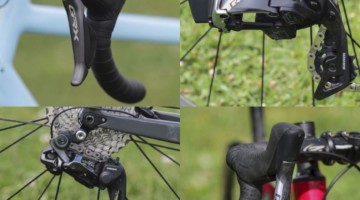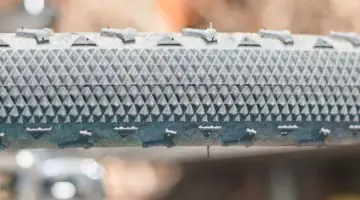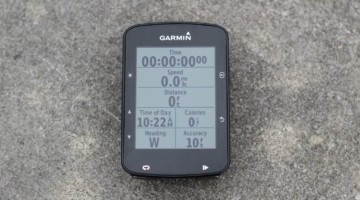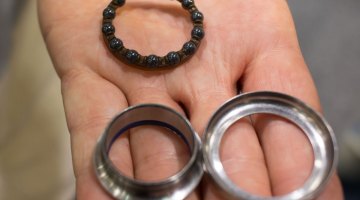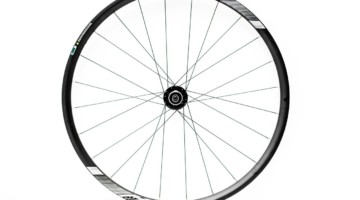This is Part I of a three-part bike diet series by weight weenie Jeremy Burlingame and was published in our premier issue of Cyclocross Magazine. Part II was published in Issue 2, and Part III was published online in July ’08.
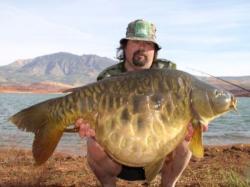 If there was ever a good reason to be fanatical about shedding pounds off of your bike, it has got to be the sport of cyclocross. With the sport’s repeated bike lifting and shouldering, as well as its constant accelerations, “needing” a lighter bike is easily justified…everyone wants to go faster. The thoughts of winning your local cyclocross race, districts, or heck, even just so you’re not last place in the C race might be driving you. You might not be as obsessed with a lightweight cyclocross bike as I am (yet), but hopefully this column will demonstrate that it’s not hard to lighten your bike. In this issue, I’ll focus on three steps to shed a few pounds off your rig.
If there was ever a good reason to be fanatical about shedding pounds off of your bike, it has got to be the sport of cyclocross. With the sport’s repeated bike lifting and shouldering, as well as its constant accelerations, “needing” a lighter bike is easily justified…everyone wants to go faster. The thoughts of winning your local cyclocross race, districts, or heck, even just so you’re not last place in the C race might be driving you. You might not be as obsessed with a lightweight cyclocross bike as I am (yet), but hopefully this column will demonstrate that it’s not hard to lighten your bike. In this issue, I’ll focus on three steps to shed a few pounds off your rig.
Step 1: To enjoy a lighter bike, you first have to change your mentality. You have to admit to yourself that your bike has a weight problem. Stop the denial! Understand that the weight of everything matters. Little things add up to big things. And big things are harder to carry up muddy hills. Shifting your focus and making a lighter bike a priority is the first key step.
Step 2: Second, you need to know what areas on your bike have the most weight to lose. I recommend owning both a gram scale that weighs items up to five pounds as well as a whole bike scale that weighs up to 40 pounds. I own two gram scales: one I bought at my local Office Depot and another that is a jeweler’s scale that measures down to tenths of grams that I got off of eBay. I also own the Ultimate Alpine Digital Scale that sells for around $60 and weighs up to 55 pounds.
Once you own a scale, the best way to know what everything weighs is to do a complete tear down of the bike and weigh everything, yes everything. The fall is a bad time to do this – doing it after the season ends is a great time to tackle such a project. A less accurate but easier way to accomplish this is to go to a site that lists the weights of various bike parts. Sites such as WeightWeenies, the French site JulMTB which has pictures of parts on the scale, or my own Plus One Lap Weight Wiki where users can upload weights of their own parts onto the site are all good examples.
By creating a spreadsheet with one column for the part type, another for the part’s name and another with the weight of the part, you will easily be able to organize all of the components on your bike. After you know what everything on your bike weighs, you need to compare the weights of your parts with the lightest weights in each category. For example, if your handlebars are 300 grams, that’s 101 grams heavier than the 3T Prima 199’s which weigh 199 grams. By examining each part in this way, you can see where your bike needs to lose the most weight. Also, by looking at other racers’ bikes at races or at Plus One Lap’s lightweight cyclocross gallery, you can see how other ‘cross racers lowered the weight of their machines.
Step 3: Lastly, make the replacements as far as your pocketbook will allow. Depending on how much weight you want to drop, you don’t necessarily need to spend a ton of cash. By buying used and selling your old parts on eBay or Craigslist, you can achieve a lighter bike that might not guarantee you a podium spot, but might cause you to be a little less fatigued by the end of the race and help you go a little faster.
One last word of caution, don’t put “silly light” parts on your bike that make it less dependable and therefore easier to give you mechanical failures. A fast bike is a bike that doesn’t break down on lap three. By talking with other racers, hanging out in weight-obsessed forums and trying out your equipment in practice, you can build a bike that is dependable but several pounds lighter than the one you have right now.
Relevant Links:
www.weightweenies.starbike.com
www.julmtb.com
www.plusonelap.com
Jeremy Burlingame is the editor and creator of Plus One Lap (www.plusonelap.com), home to the largest lightweight cyclocross bike gallery on the Internet and dedicated to all things ‘cross. You can contact him here.























